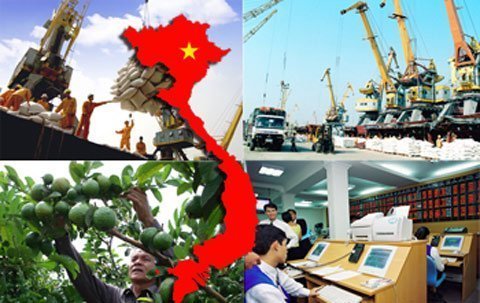INDOCHINA INTERNATIONAL CONSULTING CO., LTD
HO Add: 62L/36 Nguyên Hồng, Ward 11, Bình Thạnh District, HCMC - Vietnam
Biz Office Add: #48 Road No 11, Quarter 6, Hiệp Binh Chánh Ward, Thủ Đức, HCMC - Vietnam
®Source: http://viipip.com should be clearly quoted for any use of information extracted from our website.
Publication permit No: 60/GP-TTĐT , April 05, 2010.


Speaking at a Lower Mekong Initiative Infrastructure Best Practices Exchange in Ha Noi yesterday, Vien noted the transport sector needed over US$77 billion by 2020 for infrastructure development.
Meanwhile the Vietnamese Government aimed to cut down on public spending which has remained a major fund for infrastructure development in the country, he said.
Public-Private Partnerships (PPP) model was first launched in Viet Nam in 2010 when the Government approved Decision 71 governing projects developed under PPP contracts.
A national Steering Committee on PPP chaired by Deputy Prime Minister Hoang Trung Hai was set up last November.
However, also late last year, the Ministry of Planning and Investment announced a revision and upgrade of the decision to better adapt it with real situations.
Earlier, in 2009, the Lower Mekong Initiative (LMI) was created in response to the meeting between Secretary of State Hillary Clinton and the Foreign Ministers of the Lower Mekong Countries—Cambodia, Laos, Thailand and Viet Nam —in Phuket, Thailand.
The five Ministers agreed to enhance co-operation in the areas of environment, health, education and infrastructure development.
Since then, the five countries have sought to strengthen co-operation in these areas and build on their common interests.
Myanmar formally joined the initiative in July 2012.
As part of LMI, Infrastructure Best Practices Exchange is expected to bring together government officials from the LMI partner countries responsible for infrastructure development. Experts will be drafted from the public and private sectors in the United States, the Lower Mekong Sub-region and beyond to share infrastructure development best practices.
At the exchange yesterday, US Ambassador to Viet Nam David Shear said that he hoped the US and its LMI partner countries could generate cleaner electricity, build modern airport, seaport and transport networks to move goods efficiently and build information networks to move ideas and drive innovation.
Lorraine Hariton, special representative for Commercial and Business Affairs from the US Department of States, said that thousands of people in the sub-region had yet to access power, clean water and sanitation, especially women and children.
Improved infrastructure would help them to better access markets, improve livelihood and income, she said.
"The exchange regarding the Lower Mekong Initiative was very important because it brought together regional governments and local and international business to discuss infrastructure best practices that would benefit everyone in the region," she said.
Over 30 US companies attended the two-day exchange to discuss with regional government officials ways to meet infrastructure growing demand, which proved their interest and US commitment to help lower Mekong countries with infrastructure development.
Asian Development Bank’s Viet Nam Resident Mission country director Tomoyuki said that it was important to find feasible and suitable PPP models based on particular sectors and nations.
He urged a maturity of legal framework on PPP including realistic objectives and a cost and risk division between public and private sectors to ensure a win-win situation.
Meanwhile, Roland Yap, director of Government Affairs and Policy, General Electric, emphasised that transparency with high accountability and connectivity were among prior factors that investors cared about most when deciding any investment.- FDI capital continues to pour into Vietnam (6/11/2025 1:20:33 PM)
- Thanh Hoa receives good news: Preparing to have an additional industrial park of up to 470 hectares, creating jobs for nearly 30,000 people (6/11/2025 1:15:09 PM)
- Industrial Park Real Estate: Waiting for the New Generation of FDI (6/11/2025 1:10:15 PM)
- A wealthy Vietnamese city will have two special economic zones after the merger (6/11/2025 1:04:42 PM)
- 30 billion USD capital FDI in Việt Nam by 2025, a series of "ông big" races to expand the land fund (6/11/2025 12:55:26 PM)
- the 2nd largest city in the North will start construction on an international economic zone (6/11/2025 12:50:20 PM)
- Japanese giant Sumitomo continues to want to build an industrial park in the countrys fourth smallest province. (6/11/2025 12:40:45 PM)
- 3 foreign corporations want to invest billions of dollars in Ba Ria - Vung Tau (6/11/2025 12:34:30 PM)
- Lotte Group member starts construction of nearly 1,000 billion VND logistics center in the province with the most industrial parks in Vietnam (6/11/2025 12:33:26 PM)
- Forming a regional center for manufacturing spare parts and components (6/11/2025 12:24:08 PM)
- Vietnams first wafer factory is about to start construction (6/11/2025 12:19:09 PM)
- Dong Nai attracts foreign investors (6/11/2025 12:13:27 PM)
- Tay Ninhs largest industrial park welcomes a $150 million high-end knitted fabric factory project (6/11/2025 12:11:00 PM)
- (6/11/2025 12:09:10 PM)
- Vietnam will become a destination for Chinese investors in the future (11/6/2023 1:03:19 PM)

- FDI capital continues to pour into Vietnam
- Thanh Hoa receives good news: Preparing to have an additional industrial park of up to 470 hectares, creating jobs for nearly 30,000 people
- Industrial Park Real Estate: Waiting for the New Generation of FDI
- A wealthy Vietnamese city will have two special economic zones after the merger
- 30 billion USD capital FDI in Việt Nam by 2025, a series of "ông big" races to expand the land fund










 ADB: Vietnam’s 2009 GDP growth to be highest in South East Asia
ADB: Vietnam’s 2009 GDP growth to be highest in South East Asia MGM Grand Ho Tram: Vietnam’s First ‘Las Vegas Style’ Integrated Resort
MGM Grand Ho Tram: Vietnam’s First ‘Las Vegas Style’ Integrated Resort Nha Trang’s Twin Towers project licenced
Nha Trang’s Twin Towers project licenced Foreign investors still have good opportunities in Vietnam
Foreign investors still have good opportunities in Vietnam Sierra Wireless gets a foot in Vietnam’s ICT market
Sierra Wireless gets a foot in Vietnam’s ICT market